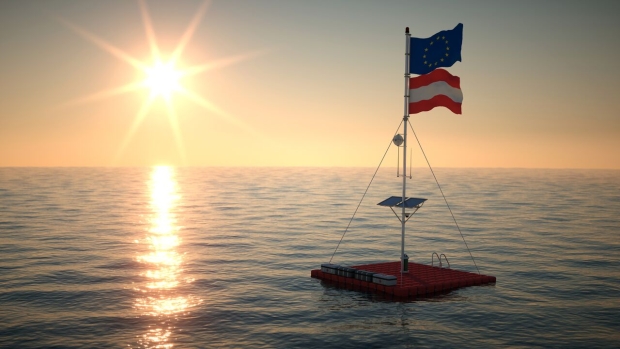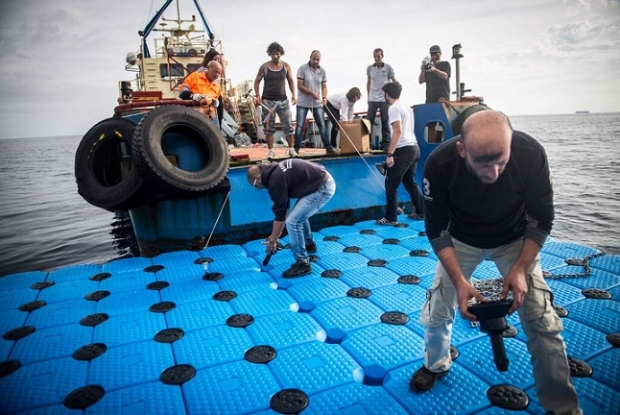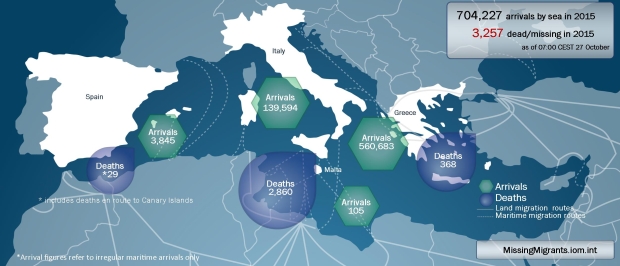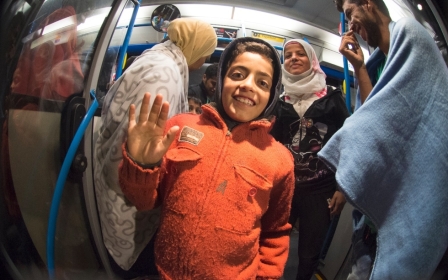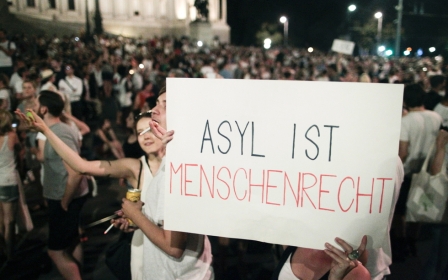Austria proposes to bridge Africa and Europe to save refugee lives
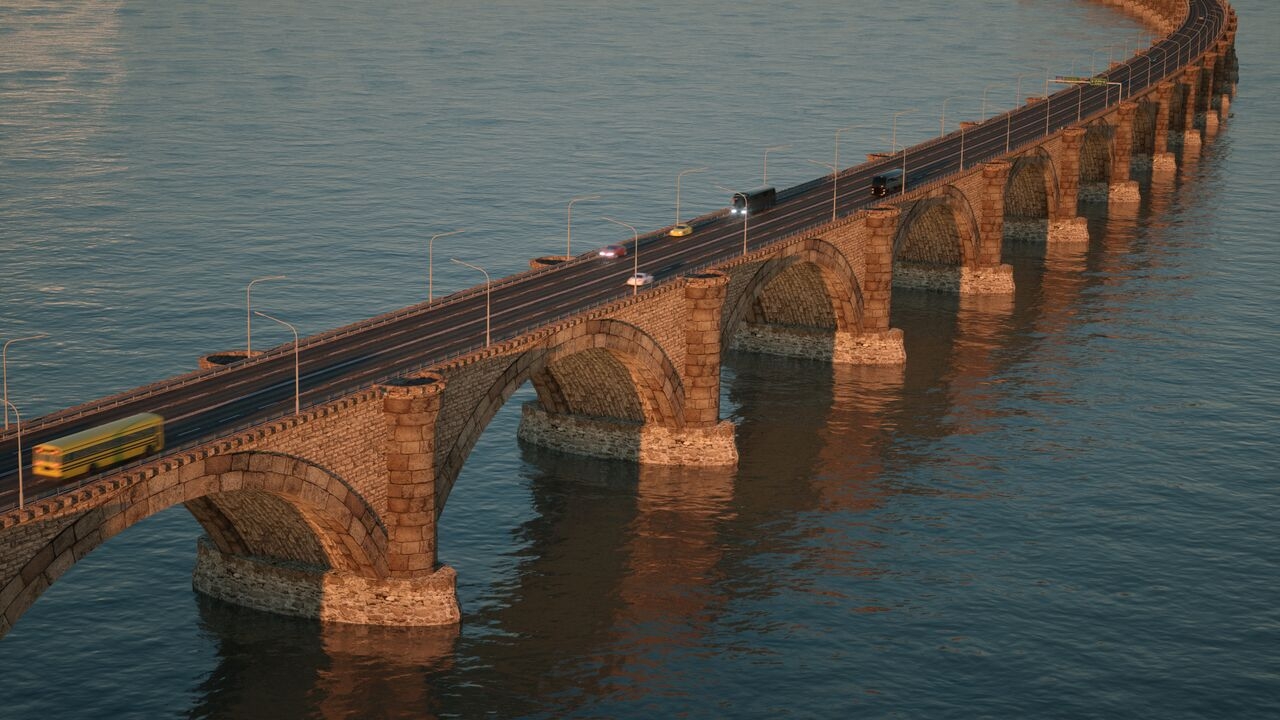
While Hungary has responded to the refugee crisis by erecting barbed wire along its 530km-long border with Croatia and Serbia, Austria has proposed another idea - building a 230km-long bridge from Africa to Europe.
Initiated by Austria’s newly elected refugee coordinator Christian Konrad, the stone bridge would connect the coasts of al-Huwariyah, Tunisia to Agrigento, Sicily in an attempt to save lives and curb people smuggling. The project also includes installing 1,000 rescue platforms as soon as possible across the Mediterranean sea.
More than 3,250 refugees have drowned this year trying to reach Europe, according to the International Organisation for Migration. A record 710,000 refugees reached European shores by boat since the beginning of this year.
Konrad submitted the project proposal in late September to the European Union’s Internal Security Fund as a revision of the Austrian government’s national plan. It could be the EU’s largest economic stimulus package ever with an estimated budget of 230bn euros ($250).
Named after Jean Monnet, the founding father of the EU, construction of the bridge would start in 2017 on both continents and would be completed by 2030. The bridge would be open for all to use - tourists and locals alike.
With the Berlin-based Centre for Political Beauty leading the project, the group installed the first rescue platform, “Aylan 1” (6x6m) in Mediterranean's international waters on 4 October. Platforms are equipped with life vests, navigation lights, food reserves, an emergency call device, photovoltaic modules, a flagpole, a camera and two anchors.
Pushing the emergency button on the platform sends out an alert to the local rescue service and to the Centre for Political Beauty with their geographic coordinates.
The group fundraised for Aylan 1 through Indiegogo. On the very first day, they met almost half of their 19,600 euro target.
The challenge now is to convince the other 27 EU member states that their project is a good idea. Having installed Aylan 1, the group now looks to the EU to fund the rest. There is no sign yet as to when a decision will be made.
“What we want to show with this is that it’s a lot easier than they always tell us,” said Frida Bauman, member of the Centre for Political Beauty.
“That some people can just go out there and already do something while they sit there and do nothing. We’re waiting for a response and we’re hoping that our little action did something good and made them think and forced them to act in one way or another.
“The politics of the European Union do not consider humanity at all. The politics aren’t aimed at helping people … but more based on their own interests,” Bauman said.
Aylan 1 took about six weeks to build and about a dozen people participated in the project.
The number of arrivals by sea in the first nine months of 2015 has been more than double the number for the whole of 2014, according to Frontex the EU border control agency.
One in every four asylum seekers is a child. Some 133,000 children sought asylum in the EU between January and July 2015 - an average of 19,000 children every month, according to Eurostat data.
While the crossing from North Africa has traditionally been more popular with refugees and migrants, this year saw a large surge in the number of people traveling through the West Balkan route and taking boats from Turkey to Greece before heading north through the Balkans in hope of reaching northern Europe.
At the Croatian-Serbian border earlier this month, many of the newly arrived refugees were smiling and in good spirits as international volunteers handed out food and clothes. They said they were thankful for having arrived this far, but were concerned about the children who partake in the perilous journey across the sea.
“The journey from Turkey to Greece was one of the most dangerous journeys we’ve ever been through,” said Said Elfawal a 24-year-old university student from Hasaka, Syria.
“I would like it if the world could help make this route easier. A lot of Syrians and children drown in the sea. I would like it the most if they could find a solution to this."
Noures Yassin, a former grocery store owner from Raqqa, Syria who had arrived at Croatia’s Opatovac refugee camp with his wife, baby and young daughter shared similar sentiments.
“From Izmir to Greece we were in a dinghy. It was the path of death,” he said. “We were in the sea for five hours. No one died but people were scared. Women and children were screaming. There were huge waves."
While the EU was founded on the idea of dissolving borders, the current refugee crisis is putting its ideals to the test.
Turkey, Greece, Bulgaria, Macedonia and Hungary have erected fences across parts of their borders to stop the flow of refugees.
Last month the Czech Republic, Hungary, Slovakia and Romania rejected the mandatory quota system which would distribute 120,000 refugees among the EU’s 28 nations based on population size, GDP and unemployment rate.
Some Central European countries have explicitly stated that Muslim refugees are not welcome. Hungary’s Prime Minister Viktor Orban argued that the influx of Muslim refugees poses a threat to Christian Europe. Slovakia similarly stated that it would only accept Christian refugees.
“If you look at the statistics in Germany, in the last two years there have been 500 attacks on refugee homes,” Bauman said. “There has not been a single 'Islamic terror' - as they call it - attack in Germany at all. What they should be afraid of is probably right-wing radicals and not Islamists.”
Artists from the Centre for Political Beauty have organised many eyebrow-raising actions in the past.
This past June, after exhuming mass graves in Greece and Italy and transporting hundreds of corpses to Berlin, they buried and held funerals for the Middle Eastern and African refugees that failed to make it to Germany alive, all in a bid to firmly help turn the political tide in Europe.
Middle East Eye propose une couverture et une analyse indépendantes et incomparables du Moyen-Orient, de l’Afrique du Nord et d’autres régions du monde. Pour en savoir plus sur la reprise de ce contenu et les frais qui s’appliquent, veuillez remplir ce formulaire [en anglais]. Pour en savoir plus sur MEE, cliquez ici [en anglais].


